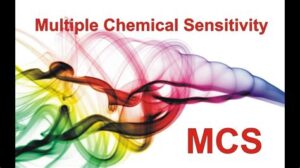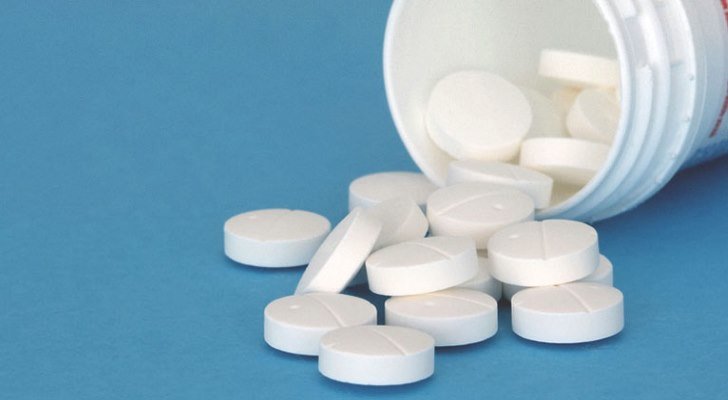Some individuals develop significant but difficult to diagnose and treat health issues and bounce around the health care system trying to get help for health issues which seem almost impossible to correctly diagnose – let alone develop effective treatment protocols.
This newsletter article from the Clinical Rounds section of Functional Medicine University discusses one type of condition that can cause this issue: MCS – Multiple Chemical Sensitivity.
Here is the article:
MCS can be difficult to diagnose because it can mimic a spectrum of other conditions.
A 25 year old woman named Jan begins her new career as a 2nd grade school teacher. After many of years of preparation, Jan is ready to serve the public and help her young students learn how to read and write. Beginning in a newly renovated school is an extra bonus which makes our new teacher proud that she became part of the educational system. Everything is moving along fine.. she couldn’t be happier!
Three months pass by and Jan has noticed that her concentration is just not right. She has been getting a little “edgy.” Definitely not like her. Her husband is concerned that maybe she is pushing herself a little too much and encourages her to simply slow down and pace herself. As the weeks go by, she begins experiencing headaches over her eyes and the back of her head. The headaches are now occurring more frequently; a minimum of 3-4 times a week.
Six months into the school season and her symptoms are getting worse. In addition to her headaches, lack of concentration and irritability, Jan is now having insomnia, cries over nothing and has noticed an unusual tingling in her face, hands and feet. Concerned, our once “excited” trainer of children decides to see her family physician. After a brief consultation and a basic physical evaluation, her physician is confident she is again just overdoing it and recommends she lighten her work load. In the mean time, she is prescribed Xanax, a mild tranquilizer to settle her nerves. Feeling reassured that nothing is seriously wrong, our teacher returns to her young students and pushes on.
Another three months pass and this time our once highly motivated teacher is only a “shadow” of herself. It takes every ounce of energy to get started in the morning. She is having greater difficulty preparing her school assignments and simply is just exhausted! In a state of desperation she is referred to a psychiatrist. He diagnoses her with depression and prescribes an anti-depressant and also recommends counseling.
After two emotional years of trying an assortment of anti-depressants and hours of counseling, Jan is stuck in a nightmare.. a web of medical labels… depression, chronic fatigue syndrome, stress … just name a few!
Is It Possible Something Has Been Missed?
Every year thousands of teachers are afflicted with a condition that simply “zaps” the life right out of them. Most physicians are at a total loss to understand what is behind this mysterious illness. Unfortunately, many people are looked at as hypochondriacs and continue to suffer year after year.
The Diagnosis
By a stroke of luck and a lot of prayer, Jan stumbled on a medical article that “painted” an exact picture of her health challenges. She was amazed to find that she was not alone and that thousands of other teachers were experiencing the same problem.
She was able to find a physician who was trained in making this difficult diagnosis and learned that she was suffering with something called “Multiple Chemical Sensitivities (MCS).” Some physicians have coined the term “The Toxic Teacher Syndrome” due to the numbers of teachers suffering with the same symptoms.
What is MCS?
Chemical Sensitivity is not a new term. It has been around for many years. The diagnosis MCS was researched by allergist Theron G. Randolph, M.D. (1906-1995). Dr. Randolph discovered that many of his patients became ill from chemical substances that were normally considered safe at the recommended dosage. In the 1950s, Dr. Randolph concluded that people were failing to adapt to modern-day synthetic chemicals. As more research was done on the effects of MCS, doctors suggested that the immune system is like a barrel that continually fills with chemicals until it overflows and symptoms appear. Potential chemical toxins include:
- Formaldehyde which can be found in foam insulation, plywood, particleboard and press cabinets, fabric finishes, new carpet, polyurethane foam rubber (used in pillows, cushions, mattresses and rug padding), mobile homes, adhesives, synthetic clothes that crease resistant, wrinkle resistant
- Oil vapors: from oil furnaces, motor-oil air-conditioning filters, electric kitchen appliances such as food processors, blenders, can openers.
- Polyethylene plastics: fake leather, artificial flowers, shower curtains.
- Household chemicals such as dry cleaning chemicals in clothes, mothballs, rug-cleaning products, paints, solvents, stain removers, air fresheners, window washing compounds
- Polyesters in clothing, upholstery, drapery, furniture and stuffing for pillows and quilts.
- Pesticide residue on cottons and woolens; residues from exterminators.
- Epoxy adhesives on plastics, electronic equipment (TVs, microwaves,) which release gases when heated up.
- Common school paraphernalia such as carbon paper, ink, mimeographic and duplicating chemicals, glue
How Do These Chemicals Cause Health Problems?
For most people the constant exposure to the above chemicals may not pose any health challenge. However, an individual may come in contact with a freshly painted room and begin to experience dizziness, nausea, headaches etc.. Usually, however, it requires the constant everyday exposure to various toxins that simply become cumulative and eventually overwhelm the body’s ability to eliminate them. When your detoxification system is in good working order, it protects you from low level chemical build-up. It is interesting that most of the sixty thousands chemicals in current use today have been developed in the last forty years. In other words, it seems quite clear that these chemicals are being made at a faster rate than our bodies are able to get rid of them.
Chemicals are known to injure the part of the cell that produces energy causing swelling of the cell membrane and a decreased ability to pump out chemical toxins. When this occurs you can experience fatigue, weakness, poor memory, migraine headaches, insomnia, anxiety, etc..
So What Happened to our Teacher?
When Jan first arrived in her new school, she was greeted with fresh paint, new carpet, new furniture etc.. which was all piled in her small room. This was further complicated by inadequate ventilation. When the chemical load to her system was too high, some of the chemicals were simply unable to be detoxified. This resulted in the slow accumulation of chemicals backing up in the blood causing her health to slowly spiral downward.
How Was She Helped?
Our school teacher was thoroughly evaluated receiving a physical examination, blood tests for liver function, comprehensive detoxification blood test and chemical toxicity assessment.
Detoxification Profile: This test is used to determine how well her body is getting rid of toxins.
Click here for a PDF copy for better clarity
of the following lab test

Comments and Results:
As you can see above ( please review PDF copy to allow for improved readibility), Jan had a normal phase I detoxification function but her phase II revealed a high plasma cysteine with low plasma sulfate and an impaired glucuronidation detoxification.
** Detoxification is much more complicated than most doctors (not trained in the diagnosis of detoxification) make it out to be and commonly will cause more harm than good.
HERE IS WHAT YOU NEED TO KNOW
A healthy liver uses two mechanisms, called Phase I and Phase II detoxification to remove toxins.
In Phase I, your body’s enzymes activate toxic substances to make them more accessible to Phase II.
In Phase II, other enzymes convert toxins to more water-soluble forms, which your body eliminates through urine or stool. Major Phase II pathways include glutathione, sulfate, glycine, and glucuronide conjugations. Individual xenobiotics and metabolites usually follow one or two distinct pathways.
Chemical Testing
A chemical blood exposure test was also performed. This test is extremely valuable in determining the levels of chemical toxins in the blood.
A checklist of suspected chemical toxins was done as well as an assessment of the schools ventilation system.
The Results
After suffering for a little over two years, her tests revealed the following:
- The Liver Profile was normal
- The Detoxification Profile revealed a compromised phase II detoxification with high plasma cysteine with low plasma sulfate and an impaired glucuronidation detoxification resulting in an inability to process the load of chemicals.
- The Chemical Testing revealed high levels of: Formaldehyde,Toluene and Xylene
- The checklist accurately correlated with her high levels of chemicals in her blood.
- As suspected, although the school received a face-lift with new furniture and a fresh coat of paint, the ventilation system was functioning at approximately 40% efficiency and needed a major overhaul!!
The Treatment
The first step was too begin treatment on improving Jan’s ability to detoxify by improving her impaired glucuronidation detoxification and decrease the total load of toxic elements.
- Ruled out hypothyroidism (delays maturation of conjugating enzyme)
- Correct nutrient deficiencies
- Increase intake of nutrient cofactors for glucuronidation
- L-glutamine, aspartic acid, niacin, vitamin B6
- Support other Phase II pathways, especially sulfation and glycination, to reduce burden
- Increase intake of cruciferous vegetables (induces conjugating enzyme)
- Had teacher purchase a Four Stage Air Filtration System for her classroom to improve ventilation
- Our teacher had a comprehensive safe environmental check of her classroom. Chemical toxins were replaced with non-toxic products. This was carried over to her home as well.
The Outcome
Within 2 weeks, Jan began to notice an improvement in her health. Her energy gradually increased, headaches were reduced to 1 every 2 weeks, the depression lifted, insomnia was replaced by sound restful sleep. By the end of 2 and half months, Jan felt like her old self again and has continued to do well ever since.
Our Comments:
This article presents a real case and demonstrates the sad fact that thousands of people are suffering needlessly. Unless a physician has studied and been trained in the diagnosis and treatment of environmental illness, many more people especially teachers and other professionals working in similar environmental surroundings will continue to develop MCS and unfortunately be “branded” undiagnosable and sadly a hypochondriac. The truth of the matter is.. there is an answer and this answer can pull many people out of this nightmare.









